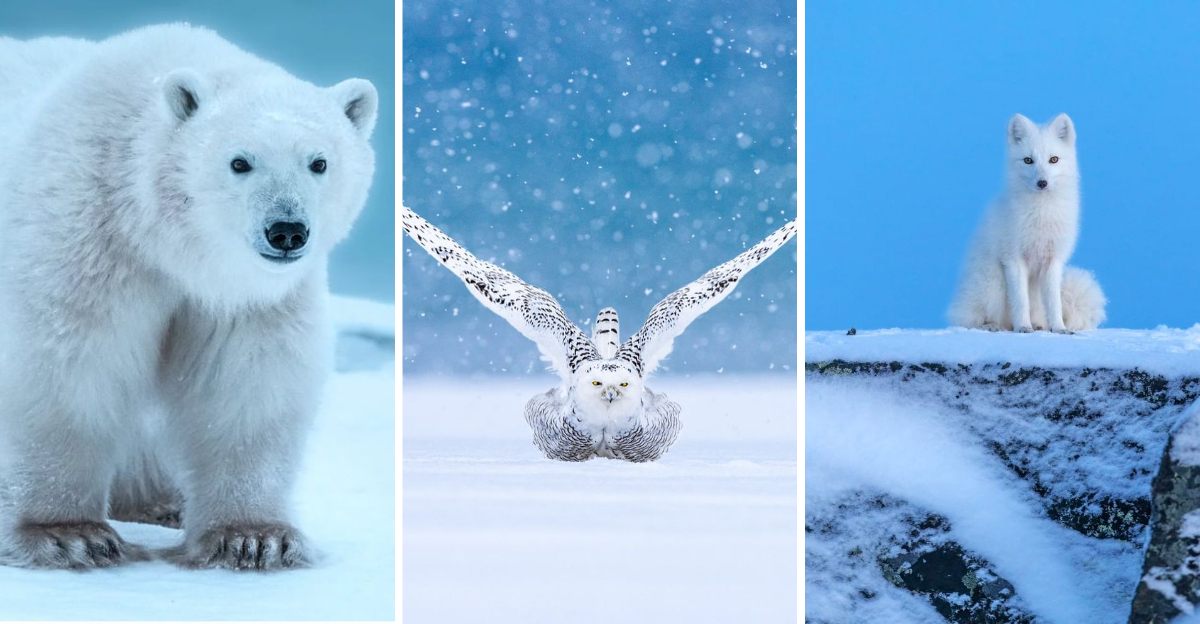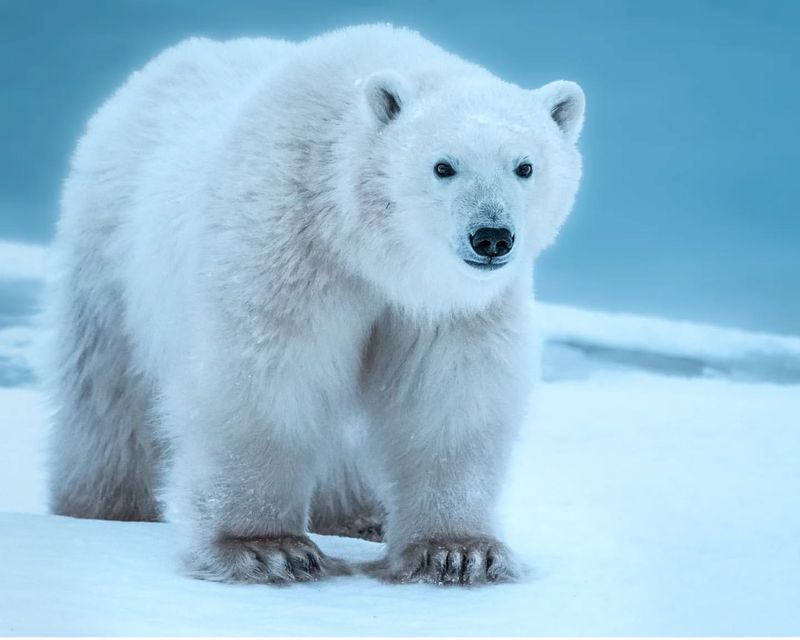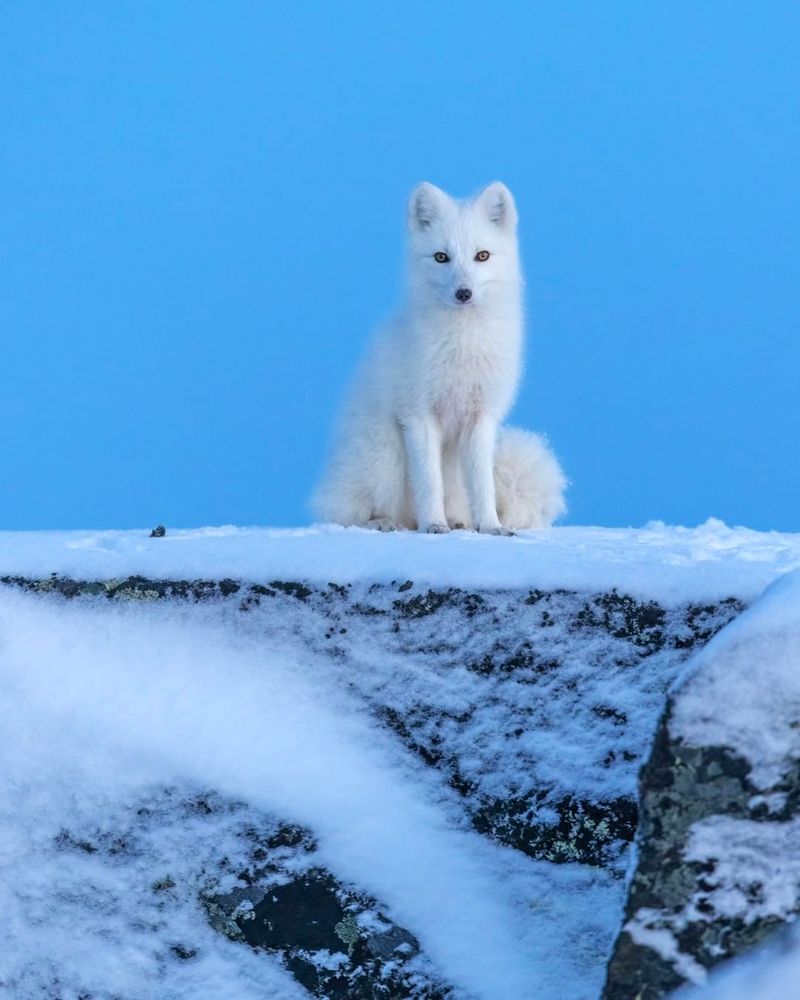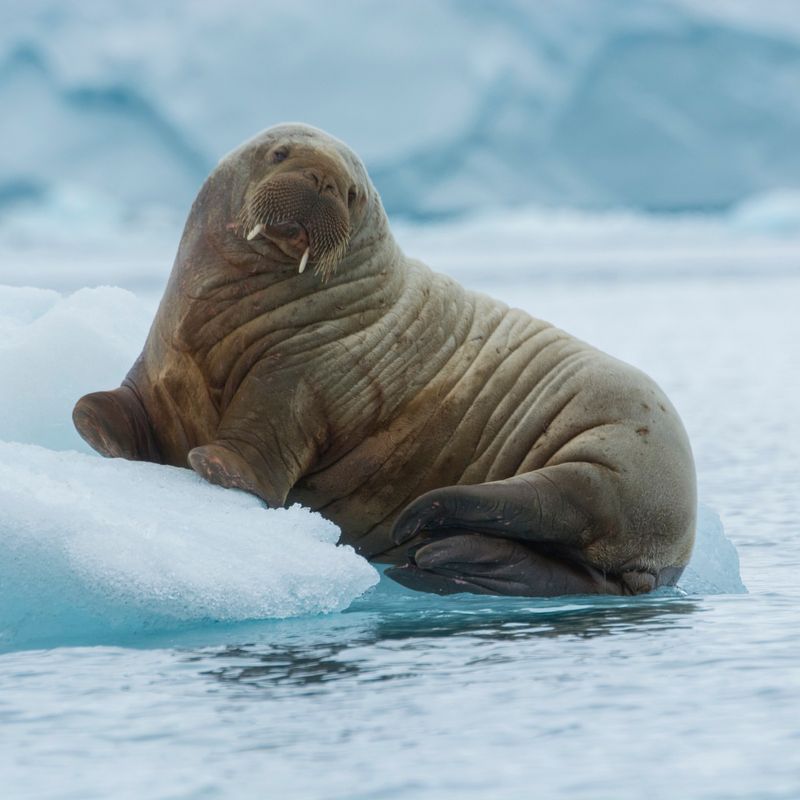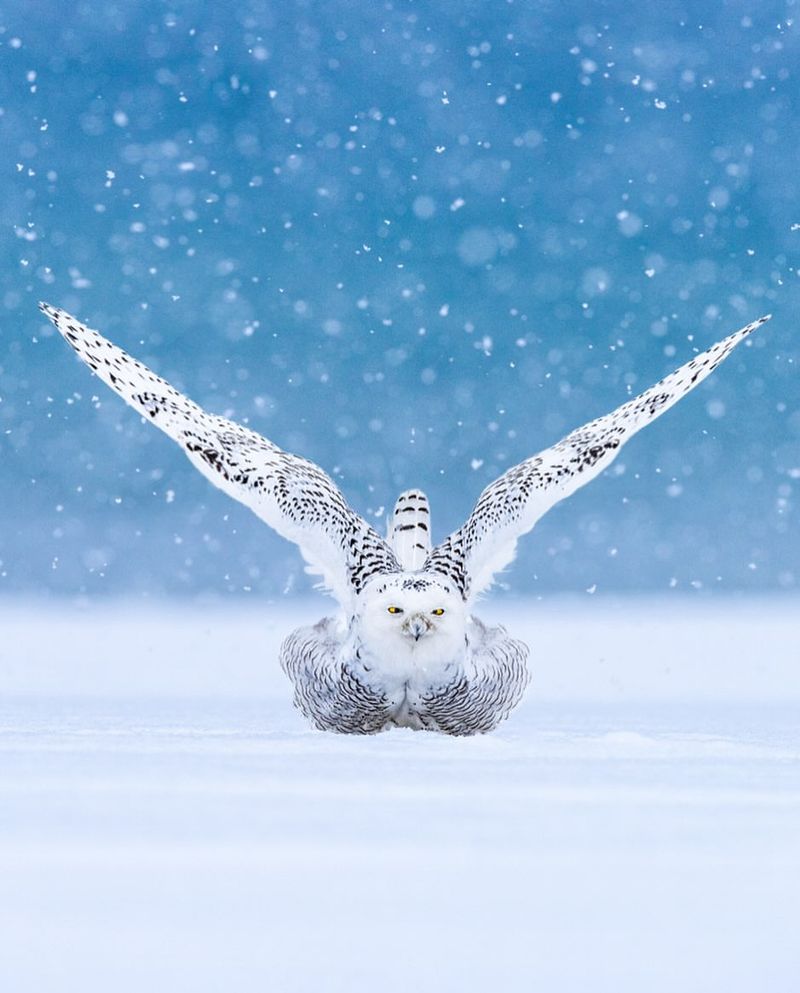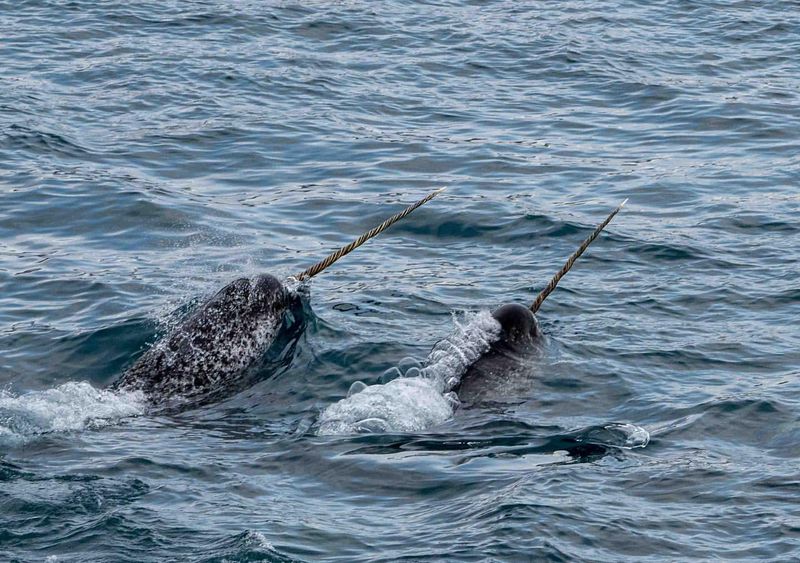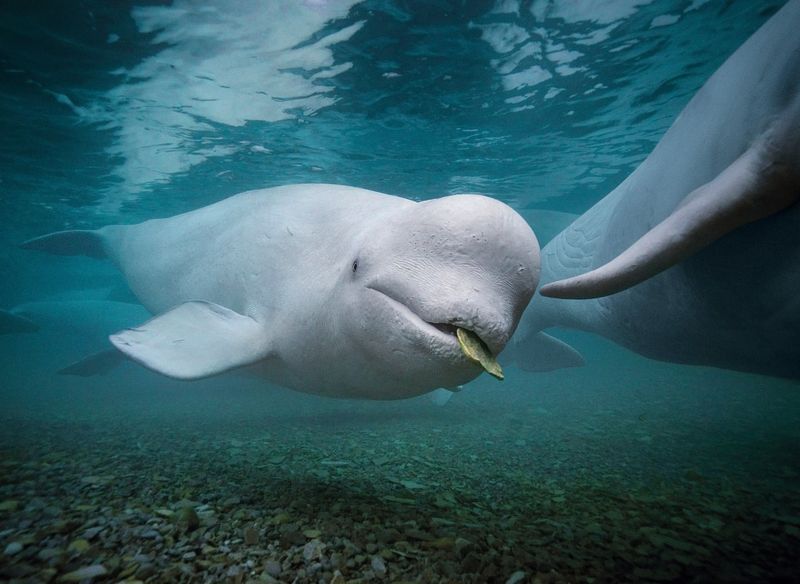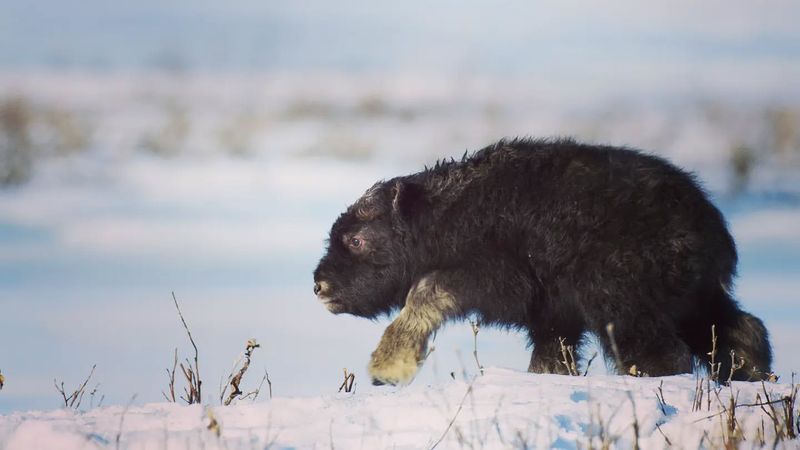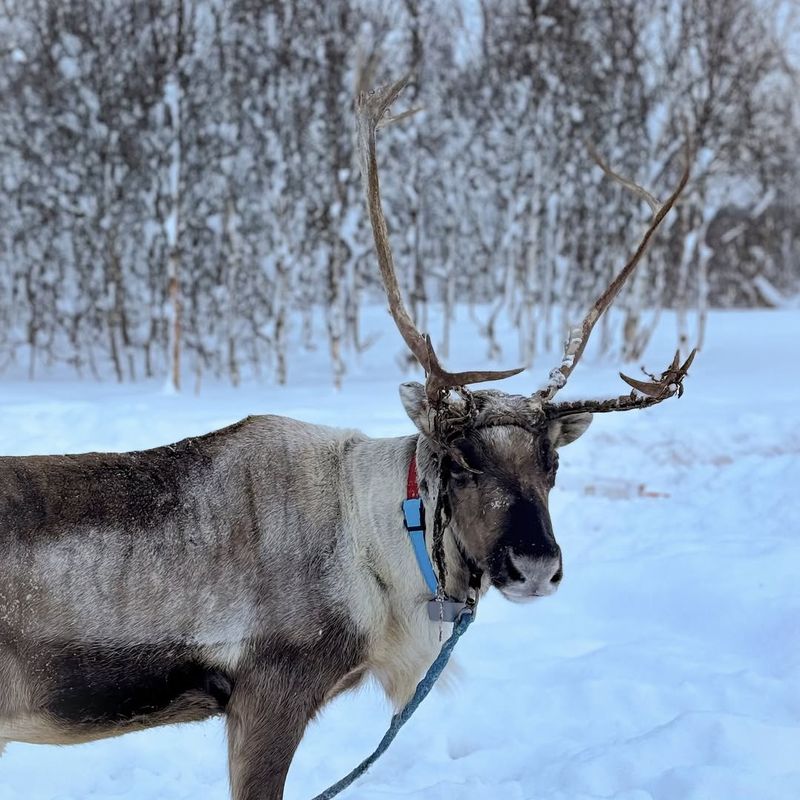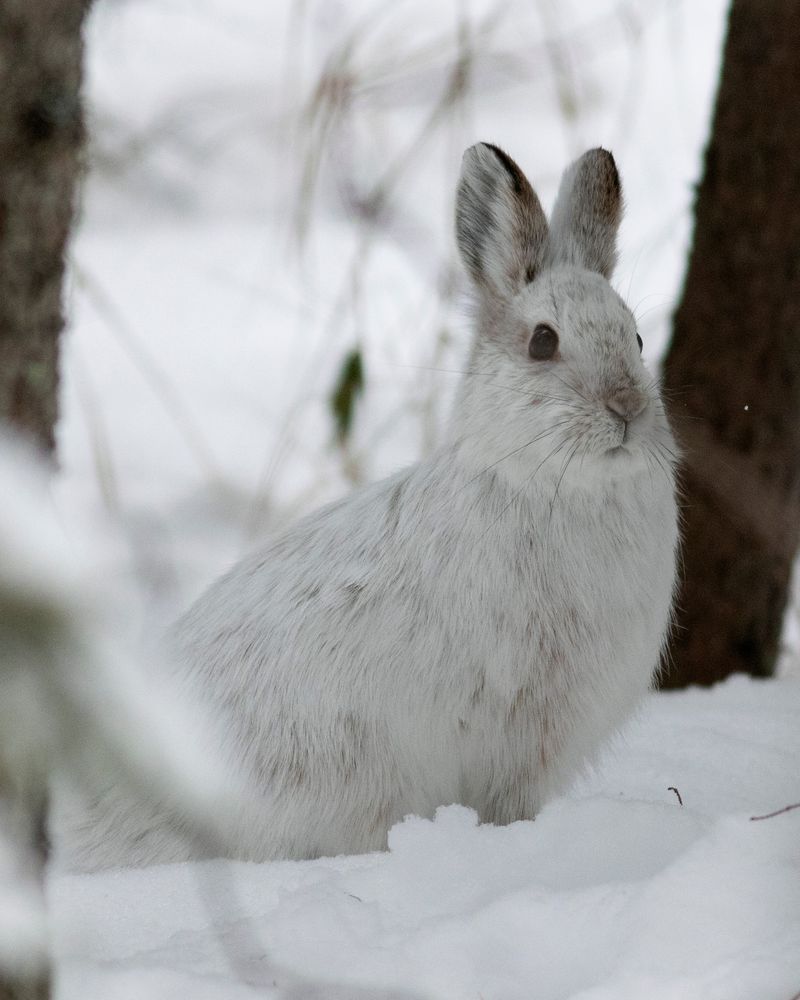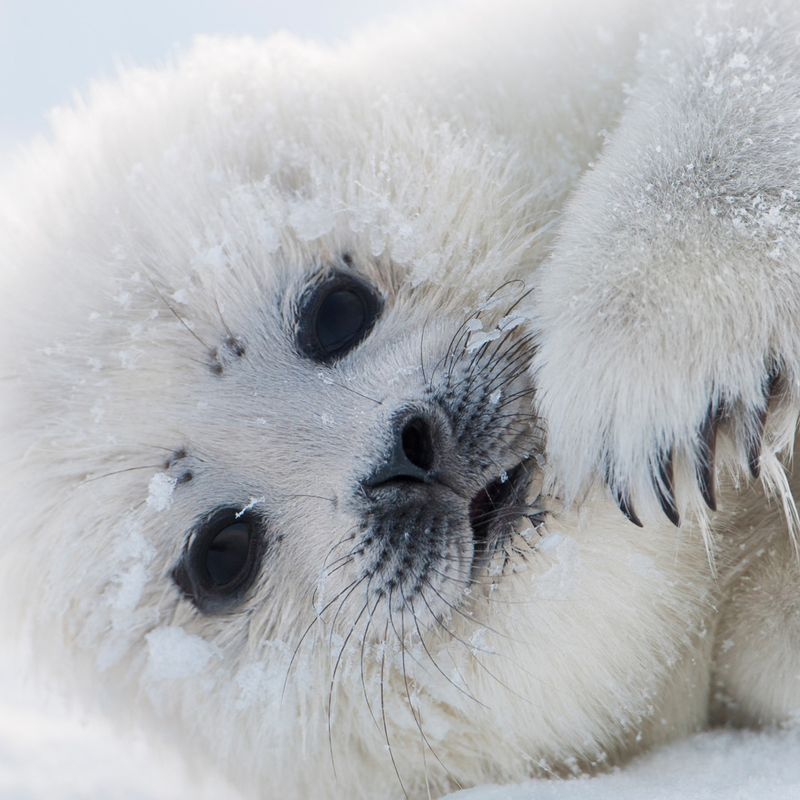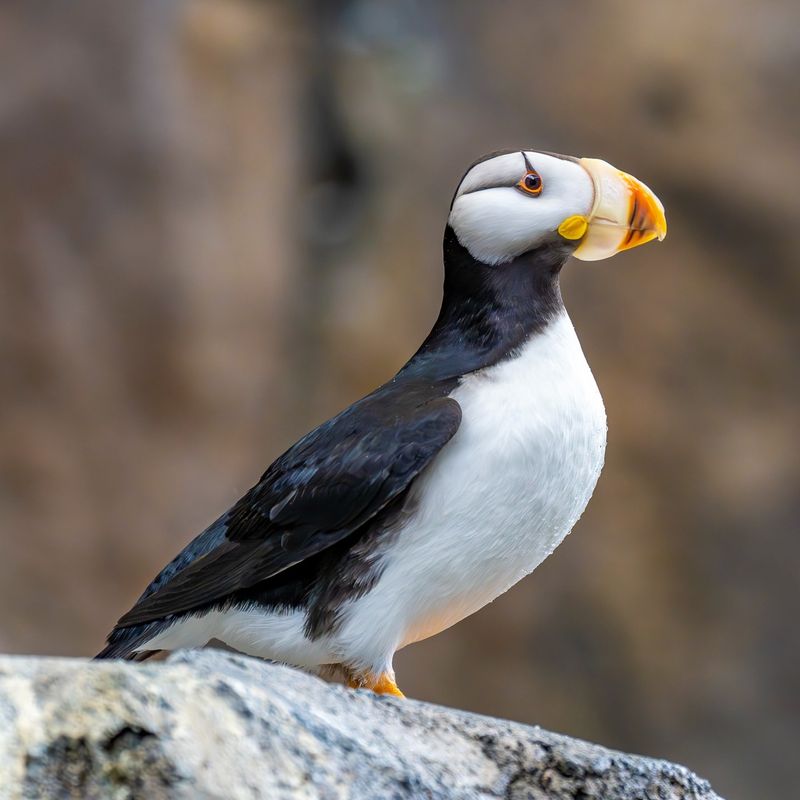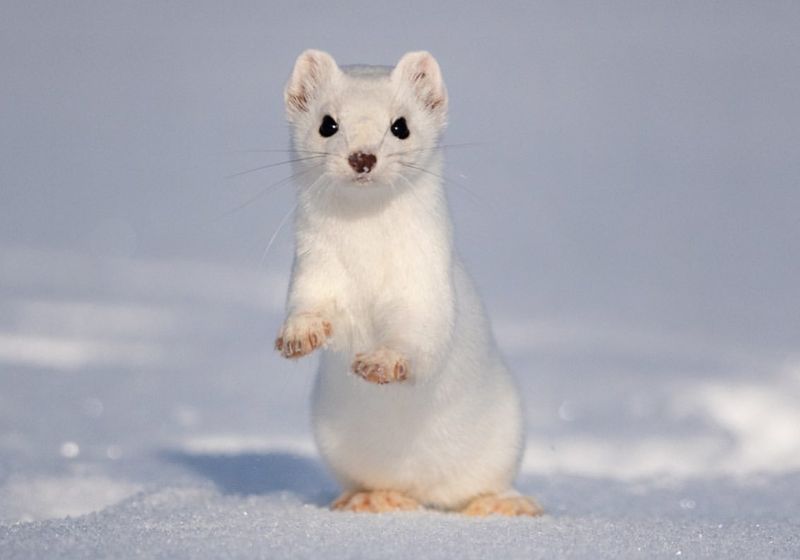📖 Table of Content:
The Arctic is a breathtaking expanse of ice and snow, where only the most resilient creatures survive. These animals have developed remarkable adaptations to endure freezing temperatures and harsh conditions. Their lives are a testament to nature’s ingenuity and the power of evolution.
From the swift Arctic fox to the powerful polar bear, each species plays a vital role in this frozen ecosystem. Their fur, fat, and hunting strategies are finely tuned for survival in extreme cold. Observing these animals offers a glimpse into the delicate balance that sustains life in the Arctic.
This journey into the icy wilderness reveals 12 incredible animals that exemplify endurance and skill. Their ability to thrive in such a formidable environment highlights the beauty and resilience of Arctic wildlife. Let’s uncover the secrets of these masters of survival and appreciate the wonders of their frozen home.
1. Polar Bear
Polar bears are the apex predators of the Arctic. Their massive bodies, covered in thick white fur, are perfectly adapted for hunting seals on sea ice. Known for their incredible sense of smell, they can detect seals nearly a mile away.
Despite their solitary nature, mothers are fiercely protective of their cubs, nurturing them in dens during harsh winters. As climate change threatens their icy habitat, polar bears are becoming the ambassadors for conservation efforts.
Embrace the majestic presence of these magnificent creatures as they navigate the challenges of a warming world.
2. Arctic Fox
A true master of adaptation, the Arctic fox thrives in the frozen tundra, its fluffy white coat offering perfect camouflage against the snow. Small ears and a compact body help conserve heat, ensuring survival in the harshest conditions.
This resourceful animal feeds on lemmings, birds, and eggs, often following polar bears for scraps. Known for their playful nature, Arctic foxes are social creatures, forming lifelong bonds with their mates.
In warmer months, their coats change to a brown and grey mix, showcasing their adaptability. Discover the cleverness of this small yet extraordinary creature.
3. Walrus
Iconic in the Arctic, walruses stand out with their impressive tusks and sociable demeanor. Growing up to three feet long, these tusks serve as tools for defense, establishing dominance, and pulling their massive bodies onto the ice.
Living in large herds, walruses are highly vocal, communicating through a series of grunts and barks. Their blubber provides insulation against freezing waters, while their whiskers help locate tasty clams on the ocean floor.
Experience the camaraderie of these lumbering giants and their essential role in the marine ecosystem.
4. Snowy Owl
A regal presence on the Arctic tundra, the snowy owl blends into its surroundings with striking white plumage that doubles as camouflage. With piercing yellow eyes, this patient and skilled hunter commands the frozen landscape.
These owls primarily feed on lemmings, and their populations often fluctuate with prey availability. During the breeding season, they’re fiercely territorial, defending their nests against intruders.
Adapting to the extreme cold with feathered feet, the snowy owl remains one of nature’s most enchanting creatures, embodying the mystique of the Arctic wilderness.
5. Narwhal
Dubbed the ‘unicorns of the sea,’ narwhals captivate with their long, spiral tusks—actually elongated teeth that can reach up to ten feet. These striking features are believed to play a role in mating rituals and social interactions.
Narwhals are deep divers, capable of plunging a mile beneath the ocean to feed on fish and squid. They travel in pods, navigating the icy waters with echolocation.
Their mysterious and elusive nature continues to intrigue scientists and ocean lovers alike, making the narwhal a symbol of the enigmatic Arctic world.
6. Beluga Whale
Known as the canaries of the Arctic sea, beluga whales enchant with their melodic calls and sociable nature. Their white coloration blends seamlessly with ice floes, while flexible necks let them nod and turn with remarkable agility.
These whales are highly social, often seen in pods that communicate using a complex array of sounds. They feed on fish, crustaceans, and worms in shallow coastal waters.
Their playful interactions with humans and keen intelligence highlight the beluga’s charming personality, earning them a special place in Arctic marine life.
7. Musk Ox
Symbols of resilience, musk oxen endure the harsh Arctic with long, shaggy coats and dense underlayers of qiviut, renowned for its warmth. Their sturdy build and thick fur make them well-equipped to thrive in the coldest environments.
Living in herds, musk oxen defend against predators like wolves by forming protective circles around the young. During the rut, males clash horns to establish dominance.
These herbivores graze on grasses and willows, showcasing their ability to thrive in sparse tundra ecosystems. Marvel at their ancient lineage and survival skills amidst the Arctic’s unforgiving landscape.
8. Reindeer
Adventurers of the Arctic, reindeer embark on epic migrations across frozen landscapes. Their large, curved antlers aid in foraging and defense, while cloven hooves serve as natural snowshoes, helping them traverse icy terrain with ease.
These animals are integral to Indigenous cultures, providing food, clothing, and transport. As seasonal travelers, they move between tundra and forest, adapting to changing conditions.
With an incredible sense of direction, reindeer navigate vast distances, showcasing nature’s GPS. Discover the wonder of their journeys and their vital role in Arctic ecosystems.
9. Arctic Hare
Speedy and agile, the Arctic hare thrives in the tundra, blending seamlessly into its surroundings. Its coat shifts from brown in summer to white in winter, providing year-round camouflage against the ever-changing landscape.
Its powerful hind legs enable it to outrun predators, while its keen senses ensure survival. Living in groups, Arctic hares dig shelters in snowdrifts to escape the cold and wind.
Their diet consists of woody plants and mosses, highlighting their adaptability to harsh conditions. Explore the life of this resilient creature, perfectly tailored for Arctic extremes.
10. Ringed Seal
The most common seal of the Arctic, ringed seals are named for the unique rings adorning their coats. Being masters of survival, they skillfully create and maintain breathing holes in the ice, thriving in the region’s frozen waters.
They feed on fish and crustaceans, using their whiskers to detect prey in dark waters. Predators like polar bears and orcas pose constant threats, yet their agility in water offers protection.
Known for their solitary nature, ringed seals haul out on ice to rest and give birth, emphasizing their crucial role in the Arctic food web.
11. Puffin
With bright beaks and expressive eyes, puffins bring charm to the Arctic’s cliffs and islands. These charismatic seabirds dive skillfully into cold waters, returning with beakfuls of fish to nourish their young.
Their wings are adapted for swimming, making them agile hunters. Puffins are social birds, forming colonies where they engage in lively interactions.
These birds face challenges from changing climates and overfishing, but conservation efforts strive to protect their habitats. Witness the lively world of puffins, ambassadors of the vibrant Arctic seascape.
12. Ermine
The Ermine, or stoat, is a small but fierce predator of the Arctic. In winter, its coat turns white, providing camouflage against the snow. Its slender body and agility make it an adept hunter of rodents and small birds.
Ermines are known for their playful behavior, often seen darting through the snow and showing curiosity. Despite their size, they have a voracious appetite and are skilled survivors.
Discover the ermine’s role in maintaining the ecological balance, a true testament to the ingenuity of Arctic wildlife.
